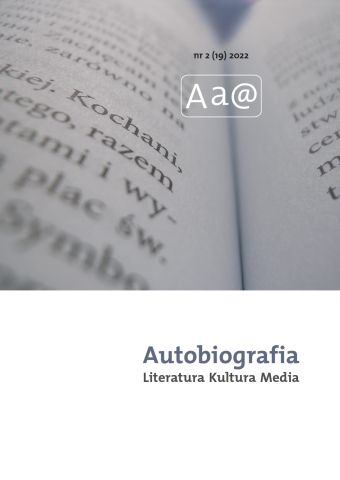






| Authors: |
EWELINA
GODLEWSKA-BYLINIAK

Uniwersytet Warszawski |
| Keywords: | disability activism autonarratives identity voice |
| Data publikacji całości: | 2022-12 |
| Page range: | 12 (85-96) |
| 1. | Couser, Thomas G. „Disability Autobiography”. W: Encyclopedia of American Disability History, red. Susan Burch, 3. New York: Facts on File, 2009. |
| 2. | Couser, Thomas G. „Disability, Life Narrative, and Representation”. PMLA 120 (2005): 602–606. |
| 3. | Garland-Thomson, Rosemarie. „Ośmielone spojrzenia. Sposoby wykorzystania dynamiki relacji opartych na gapieniu się przez niepełnosprawne performerki”. Tłum. Katarzyna Ojrzyńska. W: Odzyskiwanie obecności. Niepełnosprawność w teatrze i performansie, red. Ewelina Godlewska- Byliniak, Justyna Lipko-Konieczna, 61–74. Warszawa: Fundacja Teatru 21, 2017. |
| 4. | Garland-Thomson, Rosemarie. Niezwykłe ciała. Przedstawienia niepełnosprawności fizycznej w amerykańskiej kulturze i literaturze. Tłum. N. Pamuła. Warszawa: Fundacja Teatru 21, 2020. |
| 5. | Giddens, Anthony. Nowoczesność i tożsamość. „Ja” i społeczeństwo w epoce późnej nowoczesności. Tłum. Alina Szulżycka. Warszawa: Wydawnictwo Naukowe PWN, 2001. |
| 6. | Mitchell, David T. „Body Solitaire. The Singular Subject of Disability Autobiography”. American Quarterly 2 (2000): 311–315. |
| 7. | Rancière, Jacques. Estetyka jako polityka. Tłum. Justyna Kutyła, Paweł Mościcki. Warszawa: Wydawnictwo Krytyki Politycznej, 2007. |
| 8. | Shakespeare, Tom. „Samoorganizacja osób niepełnosprawnych: nowy ruch społeczny?”. Tłum. Agata Zawrzykraj. W: Niepełnosprawność i społeczeństwo. Performatywna siła protestu, |red. Ewelina Godlewska-Byliniak, Justyna Lipko-Konieczna, 33–51. Warszawa: Fundacja Teatru 21, 2018. |
| 9. | Wade, Cheryl M. „Writer and Performance Artist”, an oral history conducted by Esther Ehrlich in 2003. W: Art and Activism: Pioneering Theater Artists with Disabilities, Regional Oral History Office, The Bancroft Library, University of California, Berkeley, 2004, Online Archive of California: www.oac.cdlib.org. |